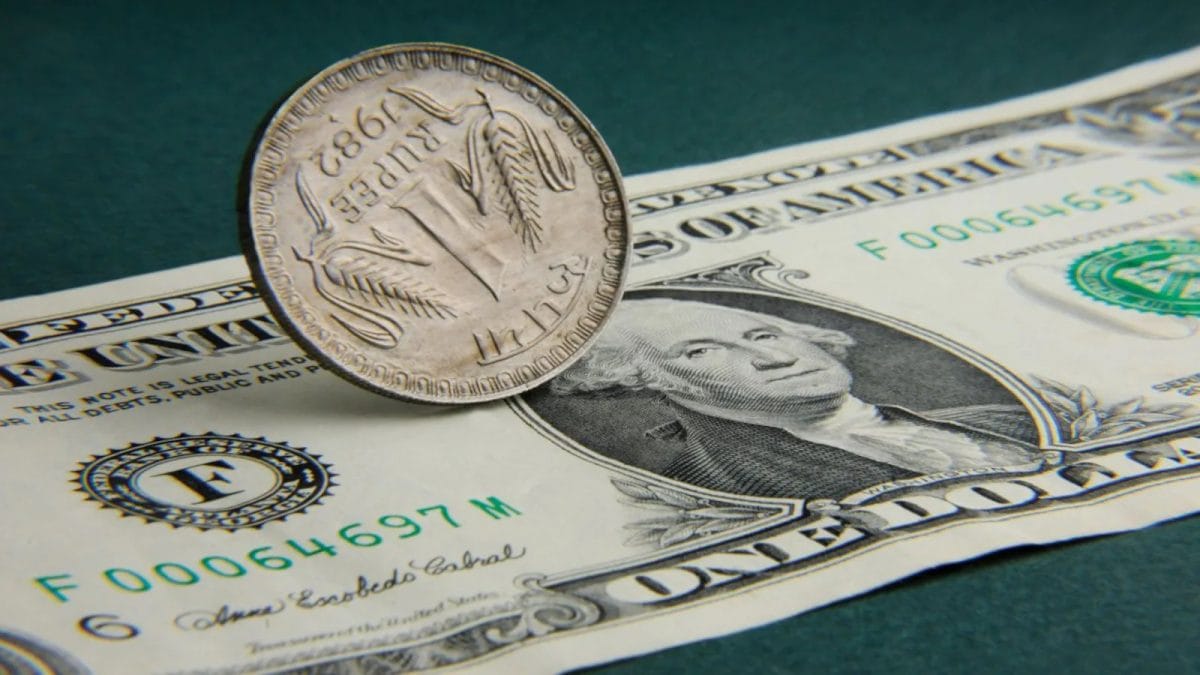 |
|
The Indian rupee's recent plunge to a record low of 87.4975 against the US dollar reflects a confluence of factors that have significant implications for the Indian economy and its citizens. The depreciation, exceeding 1.5% in 2025 alone, is primarily attributed to the strengthening US dollar, a global phenomenon impacting currencies worldwide. This isn't solely an Indian problem; the global economic landscape plays a crucial role. Experts, including NITI Aayog member Arvind Virmani, highlight the US dollar's appreciation as a major contributing factor, emphasizing that this aspect is largely beyond India's immediate control. While the Reserve Bank of India (RBI) maintains a policy of non-specific exchange rate targeting, it intervenes to mitigate excessive volatility. Reports suggest the RBI did intervene on Wednesday, likely through state-run banks, to curb the rupee's decline near its all-time low.
The weakening rupee carries substantial consequences for Indian consumers and businesses. Increased import costs are a direct effect. India relies heavily on imports for essential goods like crude oil, electronics, and machinery. A weaker rupee makes these imports significantly more expensive, leading to higher prices for consumers. This ripple effect translates into rising inflation, eroding purchasing power and impacting household budgets. Everyday items become more costly, impacting the affordability of essential goods and services for ordinary citizens. The impact is widespread, affecting various segments of the population, from those purchasing basic necessities to those planning large expenditures.
Furthermore, the depreciating rupee significantly increases costs associated with travel and education abroad. For students pursuing higher education overseas or individuals planning international travel, the expenses for tuition, accommodation, and travel become considerably higher. This makes foreign experiences more expensive and potentially inaccessible for many. However, there is a potential upside: a weaker rupee can boost India's export-oriented sectors. Industries such as IT and pharmaceuticals, which earn a substantial portion of their revenue from international markets, find their products more competitive globally. This increased competitiveness can stimulate demand for Indian exports, offering a potential counterbalance to the negative economic effects of the rupee's decline. This illustrates the complex and often contradictory nature of currency fluctuations and their impact on different segments of the economy.
The reasons behind the rupee's continuous decline are multifaceted. A widening trade deficit contributes significantly. When a country imports more than it exports, the demand for foreign currency increases, putting downward pressure on its own currency. Additionally, the surge in the US dollar index after hints from the US Federal Reserve about fewer rate cuts in 2025 has further strengthened the dollar, exacerbating the rupee's fall. Market expectations regarding interest rate cuts by the RBI also influence the currency's value. The anticipation of rate cuts can weigh on the rupee, as lower interest rates can make the currency less attractive to foreign investors seeking higher returns. The interplay of these factors underlines the complex and dynamic nature of the foreign exchange market.
The RBI's role in managing the situation is paramount. While the central bank's stated policy avoids targeting a specific exchange rate, its interventions aim to curb excessive volatility and maintain stability in the foreign exchange market. The RBI's actions, such as the reported intervention on Wednesday, demonstrate its efforts to mitigate the rupee's sharp decline. However, the effectiveness of these interventions is subject to various factors, including global economic conditions and the strength of the US dollar. The balance between intervening to manage volatility and avoiding market distortion remains a delicate task for the RBI. The central bank's decisions have wide-ranging implications for India's economic stability and its citizens' financial well-being.
Looking ahead, the outlook for the rupee remains uncertain. The strength of the US dollar, global trade dynamics, and the RBI's monetary policy will all play significant roles in shaping the rupee's future trajectory. The suggestion to consider the rupee-yuan exchange rate, as proposed by Virmani, highlights the need for a broader perspective on currency valuation, considering the performance relative to other major currencies. The interconnectedness of global markets means that the rupee's performance is not isolated but influenced by a complex web of international economic factors. The ongoing uncertainty underlines the importance of monitoring global economic developments and adapting economic policies accordingly to mitigate potential negative consequences for the Indian economy.
Source: Rupee At Record Low of 87.4975: Why Is It Falling, How Does It Impact You?
